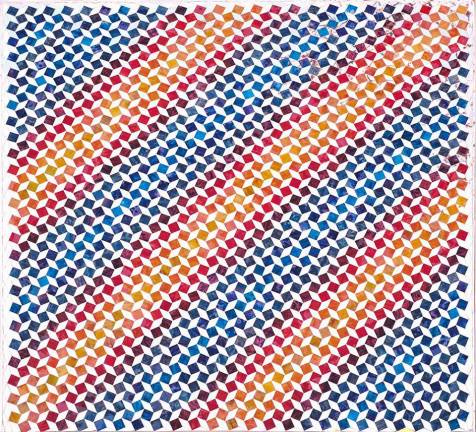Before the Revolution

Asia Society's "Modern Iran" takes us back in history
With Iran's nuclear program and new president in the news, taking a step back to the country's art prior to 1979 may enlighten the current headlines. "Iran Modern" at Asia Society includes pieces of breathtaking beauty as well as provocative religious and political commentary. The show covers the period between 1941 and 1979, paralleling the reign of the Shah of Iran, who supported both Westernization and the repression of dissent. In 1979 the Shah fled in the unrest of the Revolution, and Ayatollah Khomeini returned from exile to lead, in what continues to be, Iran as an official Islamic Republic.
For the exhibition, curators culled more than 100 pieces by 26 artists from collections outside Iran, because United States sanctions prohibit borrowing art from within the country itself. The show is organized by theme, evoking dialogues with the work based on placement, such as dazzling cut mirrors by Monir Shahroudi Farmanfarmaian opposite the dirt-encrusted canvases of Marcos Grigorian's earthworks and Nahid Hahgigat's shadowy, foreboding etchings facing Nicky Nodjoumi's vivid depictions of injustice.
In the decades leading up to the Revolution, Tehran was a cosmopolitan art center and worldwide travel, artistic exchanges, and state support created a fertile environment for artists to draw from global influences. The connection to international styles of the period is apparent in much of the show, including thick, three-dimensional strokes of paint on Manoucher Yektai's abstractions and delicate figurines of wrestlers and acrobats caught in motion by Bahman Mohassess.
While some welcomed outside influences, a school of artists calling themselves Saqqakhaneh (the term for a sacred drinking fountain) incorporate Shiite iconography and pre-Islamic folk art to create a unique, neo-traditional style. Parviz Tanavoli, a seminal figure in the movement, incorporates symbolic hands and feet as well as locks and keys to many of his pieces, melding the comic with the reverential. He sculpts bronze to create parodies of ancient tablets and to shape letters of the Persian alphabet into living creatures.
Two other key figures of the movement, Faramarz Pilaram and Charles Hossein Zenderoudi, use playful, decorative calligraphy to cover canvasses with typography. A gallery is devoted to this work, as well as that of other calligraphers such as Mohammad Ehsai, who illustrates the poetry of Omar Khayyam through the shape of his words.
A small archive room in the exhibit is devoted to posters and ephemera from art shows of day, as well as an historical timeline that traces political and cultural milestones of the era.
Iran Modern shows through January 5, 2014 at Asia Society, 725 Park Ave.
Follow Rania on Twitter: @RaniaRichardson